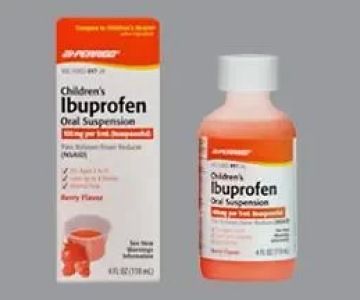What Medication Is Given to Children with Oral Thrush?
Oral thrush, medically known as oropharyngeal candidiasis, is a common fungal infection in children caused by the overgrowth of Candida yeast in the mouth. This condition can be distressing for both children and their caregivers due to symptoms like white patches on the tongue and inner cheeks, discomfort while eating or swallowing, and fussiness in infants. Understanding what medication is given to children with oral thrush is essential for effective treatment and speedy recovery.
1. Recognizing Oral Thrush in Children and Its Causes
Oral thrush appears as creamy white or yellowish patches that may look like cottage cheese inside the child’s mouth. These patches can sometimes bleed if scraped, and children may experience soreness or difficulty feeding. It’s most common in infants, toddlers, and immunocompromised children, but can also affect older kids, especially if they are using inhaled corticosteroids or have been on antibiotics.
The infection arises when the natural balance of microorganisms in the mouth is disturbed, allowing Candida to multiply excessively. Factors such as weakened immune systems, poor oral hygiene, or prolonged antibiotic use contribute to the development of oral thrush. Timely diagnosis and treatment are crucial to prevent discomfort and complications.
2. The Role of Antifungal Medications in Treating Oral Thrush
The primary approach to treating oral thrush in children involves antifungal medications, which work by eliminating the overgrowth of Candida yeast. The most commonly prescribed antifungal agents for children include nystatin, fluconazole, and clotrimazole.
Nystatin is often the first choice for infants and young children. It usually comes in a liquid suspension form that can be swabbed onto the affected areas inside the mouth several times a day. Its safety profile is well-established, and it effectively reduces fungal colonies with minimal side effects.
Fluconazole is an oral antifungal medication sometimes prescribed for more severe cases or when nystatin does not provide adequate relief. It’s administered as a syrup or tablet and works systemically, meaning it treats the infection from within the body. Clotrimazole, available as a lozenge or troche, is less commonly used in very young children but may be prescribed for older kids who can safely hold the lozenge in their mouth until it dissolves.
3. How Medication Dosage and Duration Are Determined
The dosage and length of treatment depend on the child’s age, weight, and severity of the infection. For example, nystatin oral suspension is typically given four times daily for 7 to 14 days. Parents are advised to continue medication even if symptoms improve quickly to ensure the infection is fully eradicated.
Doctors will adjust fluconazole doses carefully for children, with prescriptions tailored to minimize side effects while maximizing effectiveness. Adherence to the prescribed schedule is vital to prevent recurrence, which can happen if treatment is stopped too early.
4. Supporting Care: Beyond Medication for Oral Thrush
Medication alone is often part of a broader care plan. Maintaining good oral hygiene is essential in supporting treatment and preventing future infections. For infants, caregivers are encouraged to sterilize bottles, pacifiers, and feeding utensils regularly. For older children, gentle brushing and rinsing can help.
Additionally, if the child uses inhalers or has other underlying health conditions, doctors may recommend steps to reduce thrush risk, such as rinsing the mouth after inhaler use or managing antibiotic courses carefully.
Hydration and balanced nutrition also contribute to overall immune health, aiding recovery. Parents should monitor symptoms and consult healthcare providers if the thrush persists beyond treatment or worsens.
5. Real-Life Experiences: Parents Managing Oral Thrush in Children
Many parents have shared their journeys dealing with oral thrush in their young children. One mother from Texas recounted how her 8-month-old developed white patches after a course of antibiotics. After consulting her pediatrician, she started a nystatin treatment regimen and carefully sterilized feeding equipment. Within two weeks, the thrush cleared completely, and her baby’s feeding improved significantly.
Another parent in Florida described how her toddler’s persistent thrush required fluconazole syrup after nystatin was ineffective. She emphasized the importance of following dosage instructions and keeping in close touch with the healthcare provider to monitor progress.
These stories underline the importance of prompt treatment, medication adherence, and supportive care in managing oral thrush effectively.
6. When to Seek Medical Attention for Oral Thrush in Children
While oral thrush often responds well to medication, parents should seek immediate medical advice if the child experiences difficulty swallowing, refuses to eat or drink, shows signs of systemic infection (such as fever), or if the thrush spreads beyond the mouth. Children with weakened immune systems require closer monitoring and sometimes more aggressive treatment.
Early intervention prevents complications and supports the child’s comfort and health. Healthcare professionals can also rule out other conditions that mimic thrush to ensure correct diagnosis and treatment.
For personalized treatment advice and medication options, visiting trusted sources like Dentistry Toothtruth can provide guidance and professional support for parents navigating oral thrush care.






 Edison Dental Arts4.0 (132 review)
Edison Dental Arts4.0 (132 review) Ridgewood Dental Associates4.0 (138 review)
Ridgewood Dental Associates4.0 (138 review) Lombardi Dentistry4.0 (358 review)
Lombardi Dentistry4.0 (358 review) Dr. David Miller DDS5.0 (1 review)
Dr. David Miller DDS5.0 (1 review) Rose & Hollander Dental Associates4.0 (45 review)
Rose & Hollander Dental Associates4.0 (45 review) Smith Orthodontics4.0 (135 review)
Smith Orthodontics4.0 (135 review) The Importance of Oral Health Education During Pregnancy for a Healthy Pregnancy
The Importance of Oral Health Education During Pregnancy for a Healthy Pregnancy Best Tips for Brushing Your Teeth Properly for Healthy Gums: Essential Techniques for Oral Health
Best Tips for Brushing Your Teeth Properly for Healthy Gums: Essential Techniques for Oral Health Why Skipping Dental Checkups Can Lead to Bigger Oral Health Problems
Why Skipping Dental Checkups Can Lead to Bigger Oral Health Problems Advantages of Porcelain Dental Restorations
Advantages of Porcelain Dental Restorations How Can Diabetes Cause Tooth and Gum Problems? Preventing and Managing Oral Health Issues
How Can Diabetes Cause Tooth and Gum Problems? Preventing and Managing Oral Health Issues Healthy Habits for Promoting Good Oral Health and Hygiene: Tips for a Healthy Smile
Healthy Habits for Promoting Good Oral Health and Hygiene: Tips for a Healthy Smile